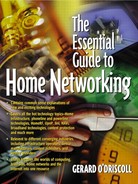DECT
DECT (Digital Enhanced Cordless Telecommunications) is a flexible digital radio access standard for cordless communications in residential, corporate, and public environments. It is supported and promoted by the DECT forum. This forum has representatives in all the major geographical regions around the world. DECT provides for voice and multimedia traffic, and contains many forward-looking technical features that allow DECT-based cordless systems to play a central role in important new communications developments, such as Internet access and interworking with other fixed and wireless services like ISDN and Global System for Mobile Communications (GSM). The DECT standard makes use of several advanced digital radio techniques to achieve efficient use of the radio spectrum; it delivers high speech quality and security with low risk of radio interference and low power technology.
TDMA (Time Division Multiple Access) radio access, with its low radio interference characteristics, provides high system capacity for users of in-home networks. ADPCM (Adaptive Differential Pulse Code Modulation) speech encoding ensures a DECT cordless phone very high speech quality, comparable to wireline telephony. DCS/DCA (Dynamic Channel Selection/Allocation) is a unique DECT capability that guarantees the use of the best radio channels available. This happens when a cordless phone is in stand-by mode, and throughout a call. This capability ensures that DECT can coexist with other DECT applications and with other systems in the same frequency, with high-quality, robust, and secure communications for end users. Other features of the DECT standard include encryption for maximum call security and optimized radio transmission for maximum battery life.
Benefits for Users of Wireless Home Networks
Low cost— Through the use of the same basic technology for everything from residential cordless phones (mass-market) up to complex multicell systems, DECT has an attractive and competitive cost position. DECT systems require no frequency planning during initial deployment or subsequent expansion. Once the radio infrastructure is in place, additional base stations and cordless terminals can easily and quickly be added.
High capacity— The radio technology used in the DECT standard permits very high concentrations of users to be served.
Spectrum efficiency— Through its advanced digital technology and unique capabilities like DCS/DCA, DECT very efficiently uses the available radio spectrum in the standard bands (1880 to 1900 MHz, 1900 to 1920 MHz, or 1910 to 1930 MHz). Various applications can share the spectrum, e.g., voice and data, or public and private applications.
Security— The combination of digital radio technology and dynamic channel selection with additional encryption techniques and authentication and identification procedures, makes DECT radio transmissions extremely secure against unauthorized radio eavesdropping by third parties. The implemented encryption method enhances the security of DECT to a very satisfactory level.
High quality— Speech quality in a DECT system is very high, thanks to the digital radio techniques applied.
High data transfer— Data applications are becoming more and more important in home networks. Today, DECT products provide data links with up to 552 kbps. New modulation schemes will rapidly allow the rate to grow up to 2 Mbps.
